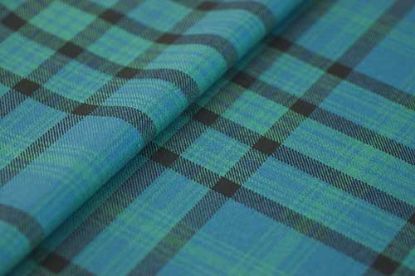Circa AD 84 Battle of Mons GraupiusPublius Tacitus, the historian of the Roman Empire, recorded that Gnaeus Julius Agricola, when Governor of Britain, marched on and defeated a great force of Caledonians in an as yet unidentified location between Strathmore and Moray. The Romans, with 8,000 infantry and 3,000 cavalry, were allegedly greatly outnumbered, the strength of the Caledonia...
1296 - 17th March 1328 The First War of Scottish Independence began when King John Balliol of Scotland refused to support King Edward I of England in his French campaign. Hostilities came to an end after thirty two years with the signing of the Treaty of Northampton in 1328. 27th April 1296 Battle of Dunbar When King John Balliol of Scotland refused to support King Edward I of England in his F...
10th May 1307 Battle of Loudon Hill Having rallied his supporters, King Robert was back in business again and came up against his old adversary Aymer de Valence, now Earl of Pembroke, ten miles north of Kilmarnock in Ayrshire. This time the English soldiers were obliged to approach their enemy over bogland, and rapidly fell victim to the spears of Bruce's men. Over one hundred were killed befor...
1332 – 3rd October 1357 The Second War of Scottish Independence began with the invasion of Edward Balliol, son of the exiled King John, and a party of the “Disinherited”, whose lands had been confiscated after King Robert I's victory at Bannockburn. The hostilities officially ended twenty five years later with the signing of the Treaty of Berwick in 1357. 12th August 1332 Battle of Dupplin Moo...
5th August 1388 Battle of Otterburn"Last night I dreamed a dreary dream, From beyond the Isle of Skye, I saw a dead man win a fight, And I think that man was I." The Battle of Otterburn (Sir Walter Scott's Border Minstrelsy).On a moonlit night in Northumberland, the Scots army under James, 2nd Earl of Douglas defeated an 800 strong English contingent under Henry Percy (“Hotspur”), son of the 1s...
23rd January 1446 Battle of ArbroathThis was a local dispute fuelled by the dismissal of Alexander Lindsay, son of the 3rd Earl of Crawford, Chief Justiciar of the Abbey of Arbroath, and the appointment of Alexander Ogilvy of Inverquharity in his place. Lindsay was ill-pleased and with 1,000 of his men took possession of the town and abbey. A battle took place and the Ogilvys, supported by Sir ...
24th July 1526 Battle of MelroseThe young James V was being held under the so-called protection of his step-father Archibald, 6th Earl of Angus and various members of the Scottish nobility, and Sir Walter Scott of Buccleuch was determined to free him. The King was being escorted from Jedburgh to Edinburgh when Buccleuch attacked the party at what was to become known as Skirmish Hill at Melrose....
1st September 1644 Battle of TippermuirThe Scottish Government, having embraced the Covenanter Cause, entered the English Civil War and, as a result, King Charles I appointed the ever loyal James Graham, 1st Marquis of Montrose, as his Scottish commander. Montrose thereafter embarked upon a triumphant campaign in which he and his followers were often heavily outnumbered. Assisted by his Clan Do...
1715 JACOBITE RISINGFollowing the death of James VII & I in 1701, the claim to the British throne was taken up by his son, Prince James Francis Edward Stuart, who became known as “The Old Pretender”. With the death of Queen Anne in 1701, and the British throne passing to the Elector of Hanover, who became George I, there was widespread disaffection. The Old Pretender had been in corresponde...
Highland mercenaries in the service of King Gustavus Adolphus of Sweden during the 30 years war. by Brian Wilton, Director, Scottish Tartans Authority. Copyright © 2023 Scots Connection Kiltmakers, Huntly. “The garb is certainly very loose and fits men inured to it to go through great marches, to bear out against the inclemency of the weather, to wade through rivers, to shelte...
Highlander wearing the Philamhor belted plaid. Only in the last few years has written evidence come to light to prove what historians suspected had to be the case, and that is that loops were sewn into the philamhor through which the belt (or if they were on the inside, a cord) would be threaded and the philamhor hung on a peg for the night. Donning the garment was then no problem and ...
























